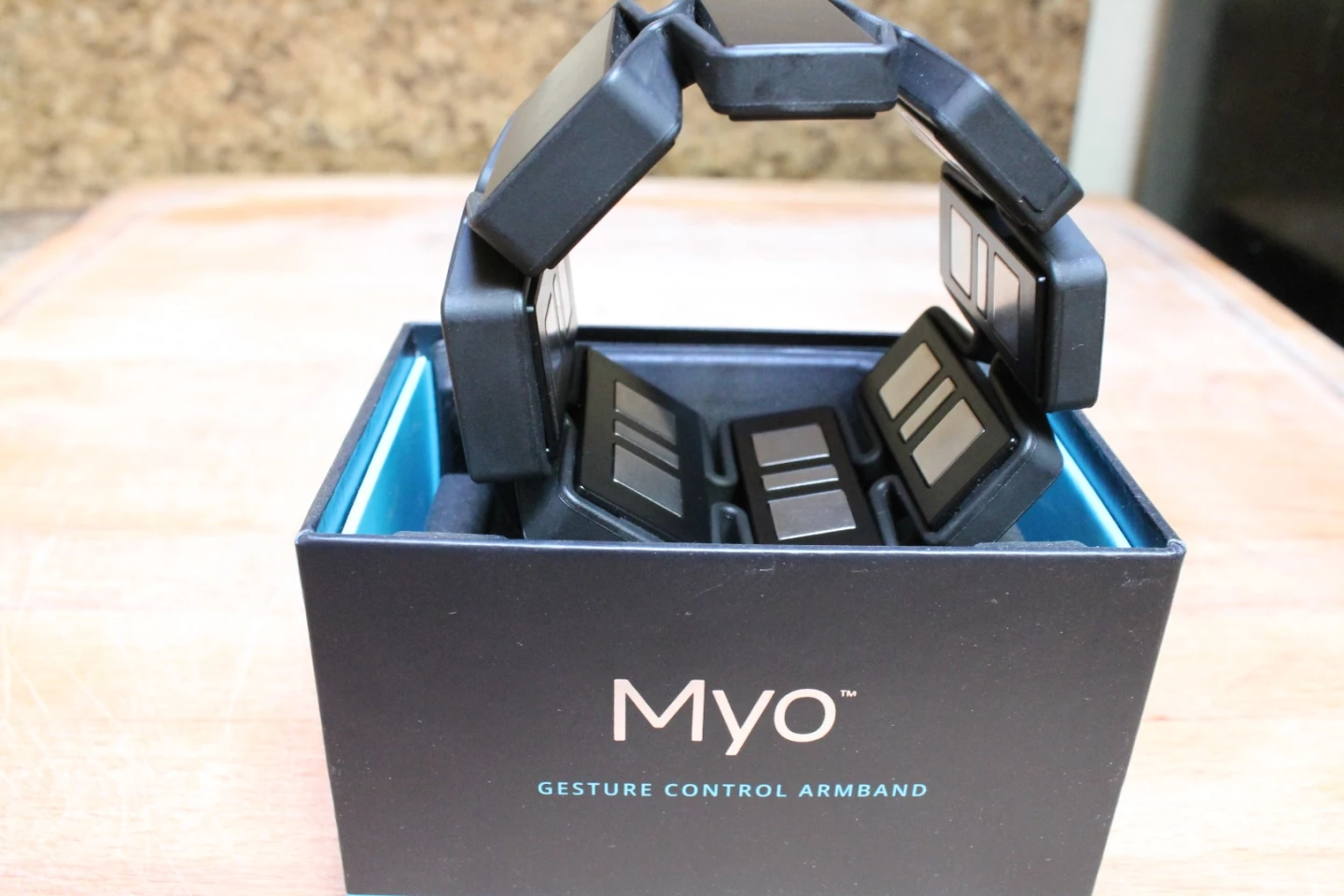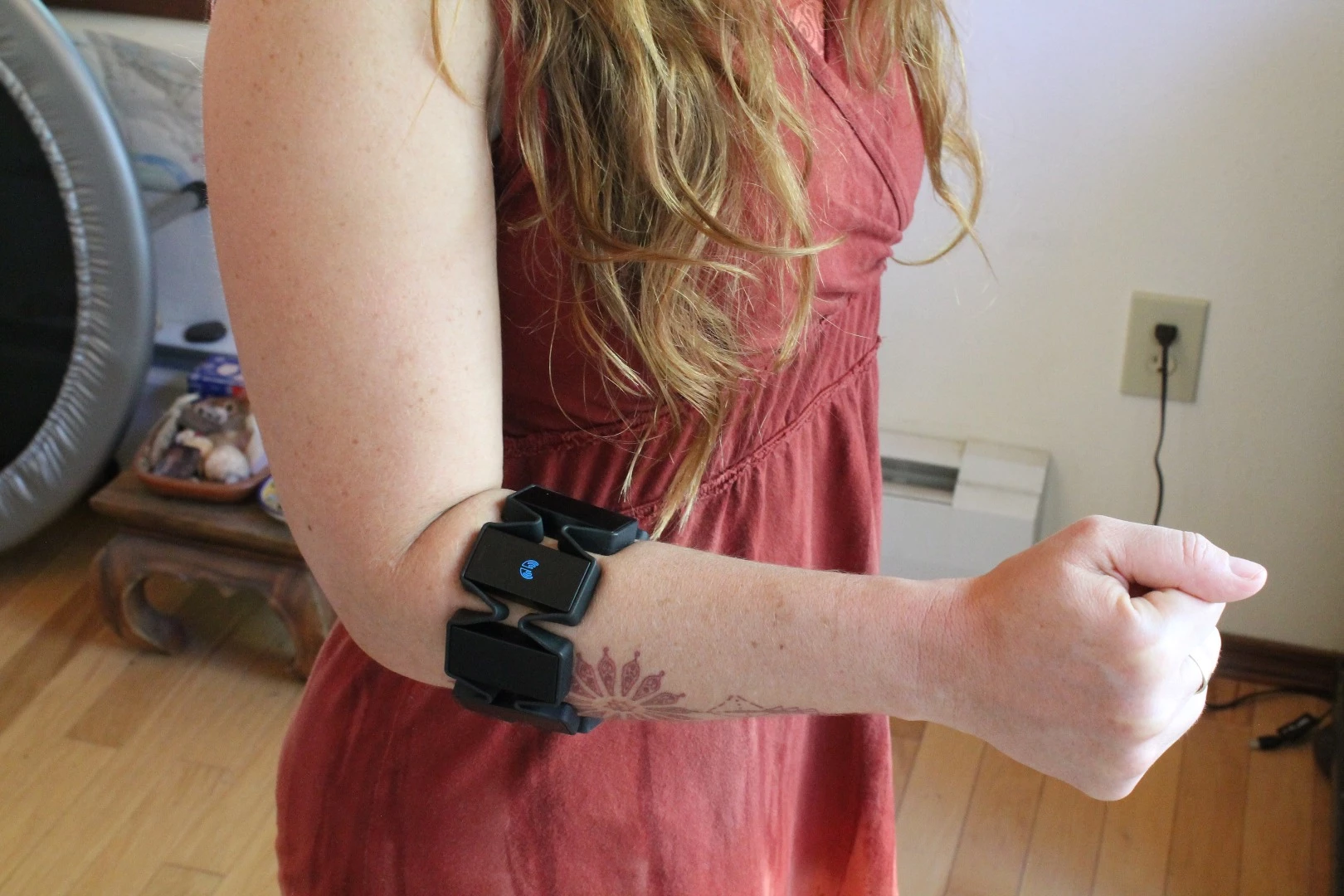A few years ago, Thalmic Labs demonstrated its muscle-controlled Myo armband that promised to bring the world of gesture controls that looked so cool in "Minority Report" to life. For the past several weeks, we've been trying it out and find that it works pretty much as advertised, but we're just not sure what we need it for. Read on for our full review.
Myo is a lightweight elastic armband consisting of a number of metal contacts that measure electrical activity in your forearm muscle to transmit gestures that you make with your hand to a connected device via Bluetooth.
Setting up and syncing with the armband is easy enough via a USB dongle that plugs into your laptop. Once you're set up, it's also possible to connect directly via Bluetooth to other devices and even control things like those crazy Sphero robots using Myo.
Wearing the Myo itself is also relatively comfortable, but it's certainly not invisible and not the kind of thing that you'll easily forget you have on. After initial setup, Myo walks you through the handful of gestures that it recognizes, like moving your wrist until your hand is at roughly a 90-degree angle with your arm, closing and opening a fist and tapping your thumb and finger together.

We were sent a Myo to test its ability to remotely control presentations like Powerpoint, which was pretty cool, and we held onto it to try out its more recently released ability to replace keyboard and mouse controls, which turned out to be a little less practical.
The problem with Myo is that it's limited to just those few gestures, a few of which can actually be uncomfortable to perform (how often do you make your hand perpendicular to your arm in normal life?) and it doesn't recognize those gestures correctly 100 percent of the time. We found it got gestures right closer to about 80 or 85 percent of the time.
So while it is a pretty handy system for a few niche tasks, like controlling presentations from across the room, the error rate is a little high for what can often be a high pressure, high stress situation, especially when you factor in that a presenter might have to limit the amount of gesticulating with their hands that they normally do to avoid making an inadvertent Myo gesture.
Skipping music tracks while biking or driving with a gesture was one handy use, and there may be potential in other sorts of performance, industrial or perhaps engineering applications.
As for replacing a mouse and keyboard, Myo is able to turn your hand into a pointing device, with the finger-tapping gesture replacing the mouse click. It's possible that could come in handy in certain niche situations, but we didn't come across any of those in our time with the product.
The keyboard replacement function involves moving your Myo hand to control a cursor over the keys you want to hit on a virtual, on-screen keyboard. It takes a while to get the hang of it and even then seems agonizingly slow compared to regular typing or similar touch interfaces where you trace over the letters of the word you want to type.
Myo isn't betting solely on productivity applications, though. There's also a small but growing app market with over 100 apps so far from both Thalmic labs and third-party developers. There are apps to control things like media players, your Mac Desktop, social media accounts, e-mail and even Parrot drones with Myo. The problem is it's hard to find many examples in the app library where the limited gesture controls are more practical than legacy controls.

One possible exception is gaming – Myo versions of Fruit Ninja, Minecraft and even a flight simulator that combines gesture controls for use with an Oculus Rift VR headset are probably some of the most promising use cases.
If our world were more ideally suited for gesture-based interactions and if we regularly interfaced with systems where gestures offered more utility than a touch screen or a mouse, Myo would be extremely useful, but for now it seems to be ahead of its time at best and completely unnecessary at worst.
If you want more gesture-based control in your world, we'd be curious to hear about how in the comments. Meanwhile, Myo can be purchased online for US$199.
The promotional video below includes a few more examples of the Myo armband in action.
Source: Myo












